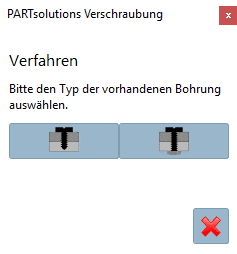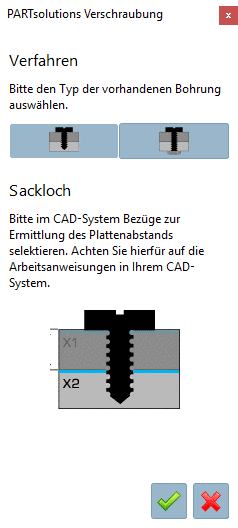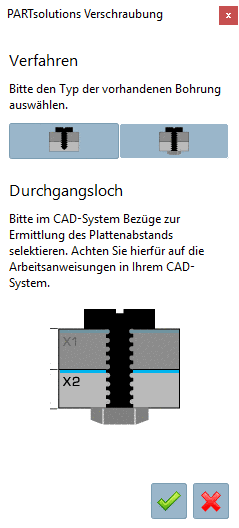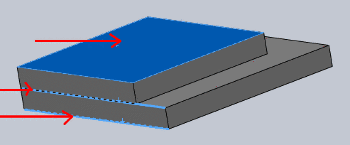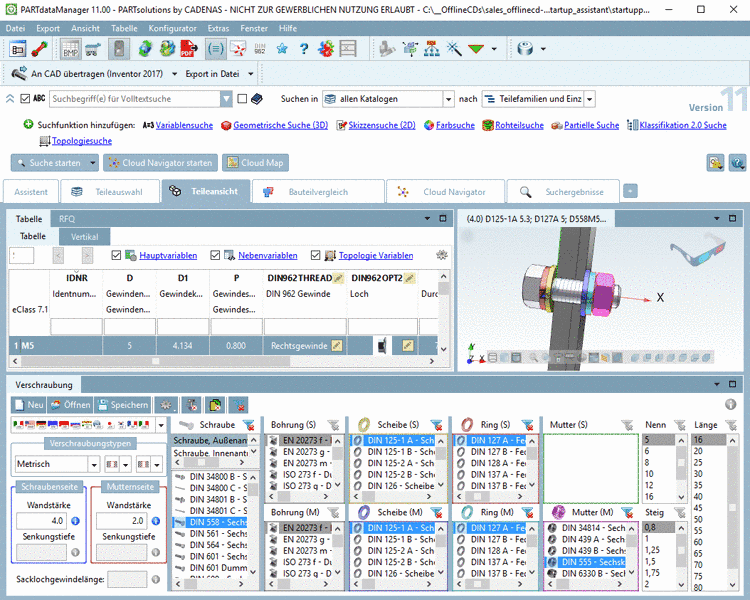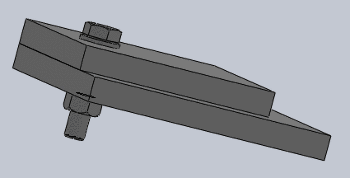Manual
Login
Our 3D CAD supplier models have been moved to 3Dfindit.com, the new visual search engine for 3D CAD, CAE & BIM models.
You can log in there with your existing account of this site.
The content remains free of charge.

Top Links
Manual
-
In the PARTsolutions menu of your CAD system click on Insert Connection.
-
-> The respective information for selection is displayed.
-
Choose the best elements for the definition of the distance (normally with the help of Ctrl key).
Per cursor, you can capture corners, edges or parallel Layers (wall thicknesses) of the elements to be connected, as well as the Insertion point of the connection. Depending on whether you want to insert a through hole or blind hole boring, you must determine the required reference planes on the surface of the selected elements.
-
In PARTdataManager, determine the desired connection elements.
Detailed information on this can be found under Section 3.1.12.4, “User interface in detail ”.
-
This option determines if the holes are exported as actual parts.
![[Note]](/community/externals/manuals/%24%7Bb2b:MANUALPATH/images/note.png)
Note Whether the corresponding holes (through hole/blind hole) are also created depends on the respective CAD system (see Section 2.5, “CAD specific menu commands and information ”).
-
Then click on the
 button, or the menu command under Export -> Transfer to CAD.
button, or the menu command under Export -> Transfer to CAD.The export of a Connection to your CAD system occurs analogously to the way parts and assemblies are transferred. See Section 3.1.8, “ Export to CAD (with and without interface) ”.
-> The view returns to the CAD system and the placement dialog is opened.
-
-
According to selection the corresponding connection point is displayed.
-





